The Military in Bangladesh: Modern Roles and Challenges
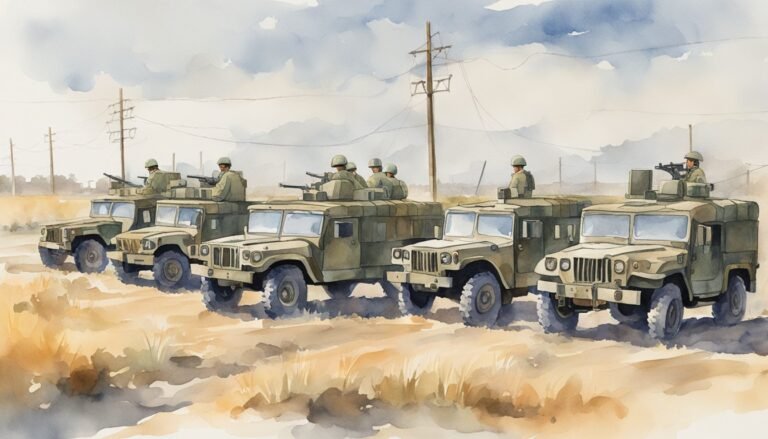
The military in Bangladesh has evolved significantly over the years, reflecting the nation’s commitment to preserving its sovereignty and contributing to global peace. The Bangladesh Armed Forces are composed of three branches: the Army, Navy, and Air Force.
This military powerhouse ensures the security of over 160 million people, with each branch playing a crucial role in national defense and international peacekeeping.
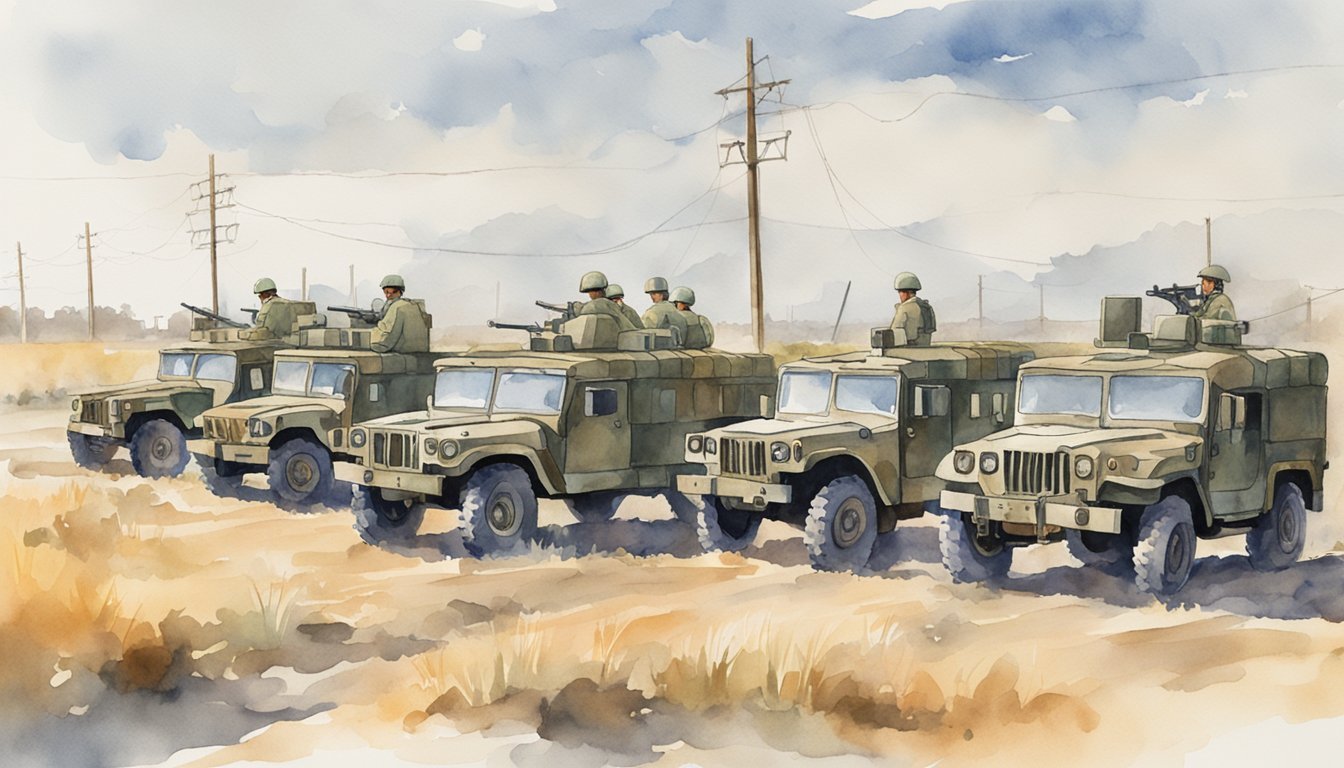
The Bangladesh Army is recognized as the largest component and focuses on land-based defense strategies.
Modernization initiatives, like the “Forces Goal 2030,” aim to enhance the capabilities of all military branches, ensuring they remain robust and capable.
Additionally, Bangladesh’s collaboration with global powers, such as the joint military exercises with China, underscores its strategic position in the shifting geopolitical landscape.
Beyond defense, the military’s influence extends to various socio-economic aspects.
By participating in international peacekeeping missions, the Bangladesh Armed Forces have earned a reputation for maintaining peace and stability worldwide.
Their presence not only boosts national pride but also strengthens diplomatic ties with other nations.
Key Takeaways
- Bangladesh Armed Forces include the Army, Navy, and Air Force.
- Modernization efforts aim to enhance military capabilities.
- Bangladesh plays a significant role in international peacekeeping.
Historical Background
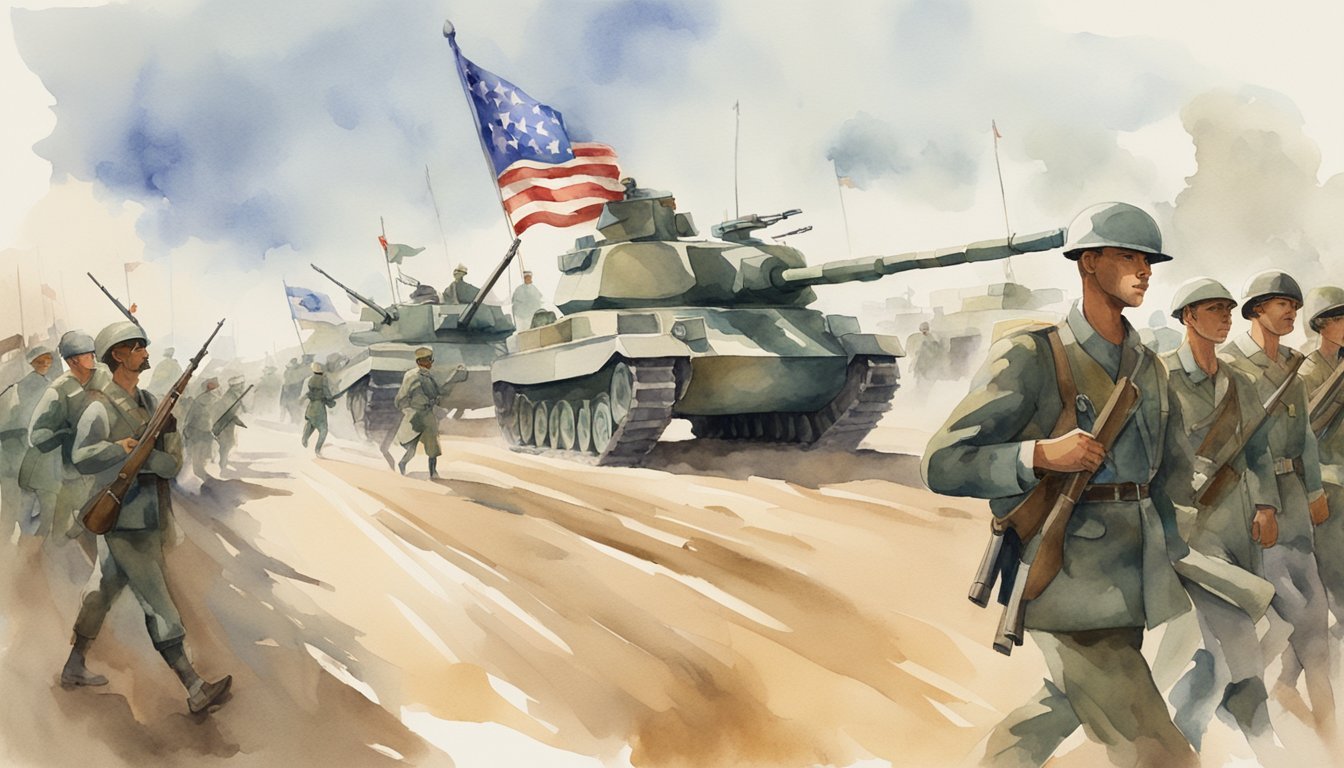
Bangladesh has a rich military history that includes notable events like the formation of the armed forces and the Bangladesh Liberation War.
Key figures and groups like the East Bengal Regiment and Sheikh Mujibur Rahman played crucial roles.
Formation and Early Years
The military history of Bangladesh starts with the creation of the East Bengal Regiment in 1948.
This regiment was formed in Dhaka under Major Mohammad Abdul Gani’s leadership.
The initial years of the military were marked by their contributions to regional stability.
The British influence played a significant role in structuring the early military.
Many officers were trained by the British and served in the Indian Army Pioneer Corps during World War II.
This experience helped shape the disciplined force that would later engage in significant conflicts.
By the 1960s, the East Bengal Regiment had grown to include 8 battalions.
These battalions had several remarkable achievements, contributing to both national defense and regional engagements.
Bangladesh Liberation War
The Bangladesh Liberation War was a pivotal event in the nation’s military history.
It started on the night of March 25, 1971, with Operation Searchlight conducted by the Pakistan Army.
This brutal crackdown led to widespread atrocities against Bengalis.
In response, the Mukti Bahini, a guerrilla resistance movement, was formed.
This group was instrumental in the fight for independence. Sheikh Mujibur Rahman, a key leader, declared Bangladesh’s independence, rallying significant domestic and international support.
The Indian Army provided crucial assistance to the Mukti Bahini in December 1971, leading to a decisive victory over the Pakistani forces.
This collaboration and the bravery of the Mukti Bahini fighters helped secure Bangladesh’s independence, forever etching their role in the nation’s military history.
Structure of Bangladesh Armed Forces
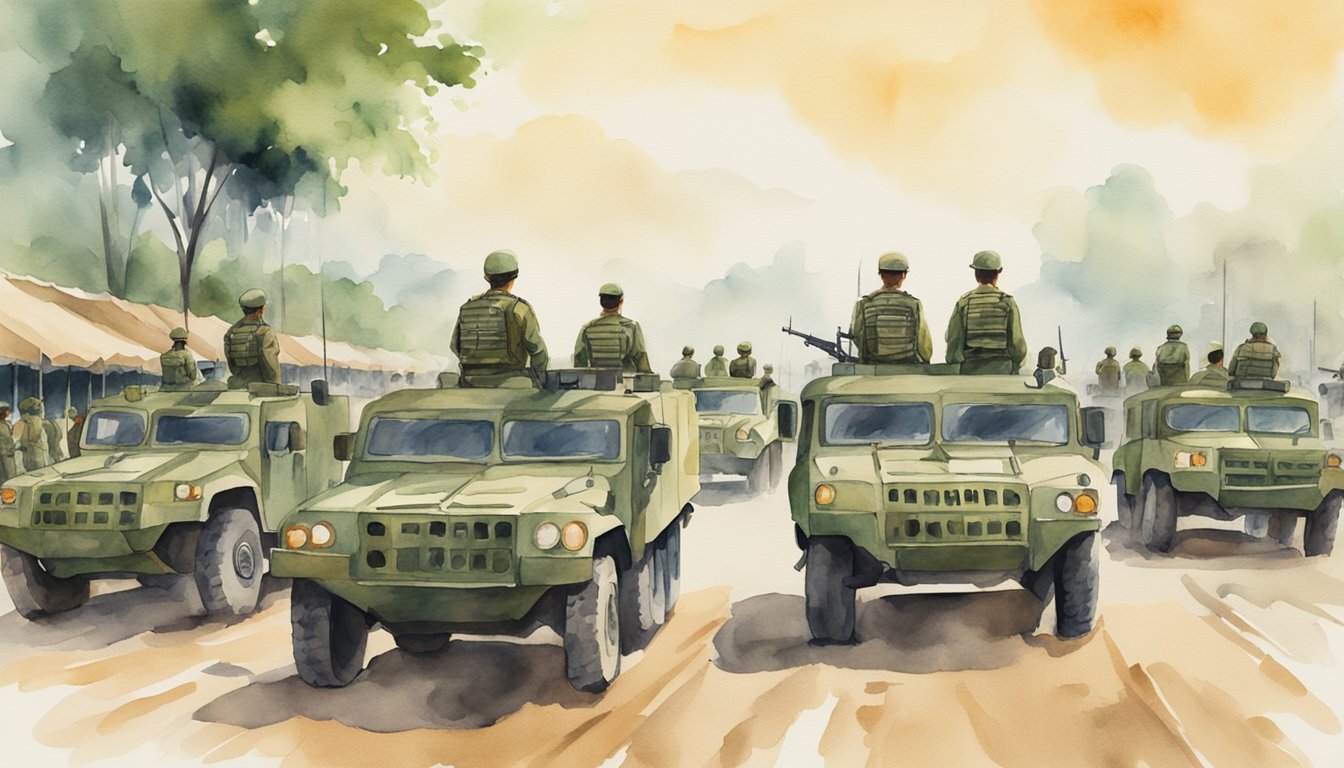
The Bangladesh Armed Forces are organized into several branches to ensure the country’s security.
They include the Bangladesh Army, Navy, and Air Force, which report to the Ministry of Defence.
Overall Command
The Commander-in-Chief of the Bangladesh Armed Forces is typically the President of Bangladesh.
However, the Ministry of Defence handles day-to-day operations and decision-making.
The command structure starts in Dhaka, where the Armed Forces Division is located.
This division coordinates among the three branches and oversees military planning.
Senior officers from each branch form the core of this command system.
Communication is key, and each branch has its own chain of command.
This ensures that orders flow smoothly from the top to individual units and personnel, maintaining operational efficiency.
Branches and Divisions
The Bangladesh Army is the largest branch, focused on land-based military operations.
It is divided into several infantry divisions and specialized units, such as artillery and armored corps.
Key responsibilities include border security and internal stability.
The Bangladesh Navy protects the country’s maritime interests and coastline.
It operates from several bases around Bangladesh with ships, submarines, and special forces units.
The Navy also plays a role in international peacekeeping and anti-piracy operations.
The Bangladesh Air Force oversees air defense and aerial operations.
It maintains a fleet of fighter jets, transport aircraft, and helicopters.
Air Force units also engage in disaster relief and humanitarian missions around the world.
Each branch operates semi-independently but coordinates closely under the unified command structure, ensuring a cohesive defense strategy.
Modernization and Development
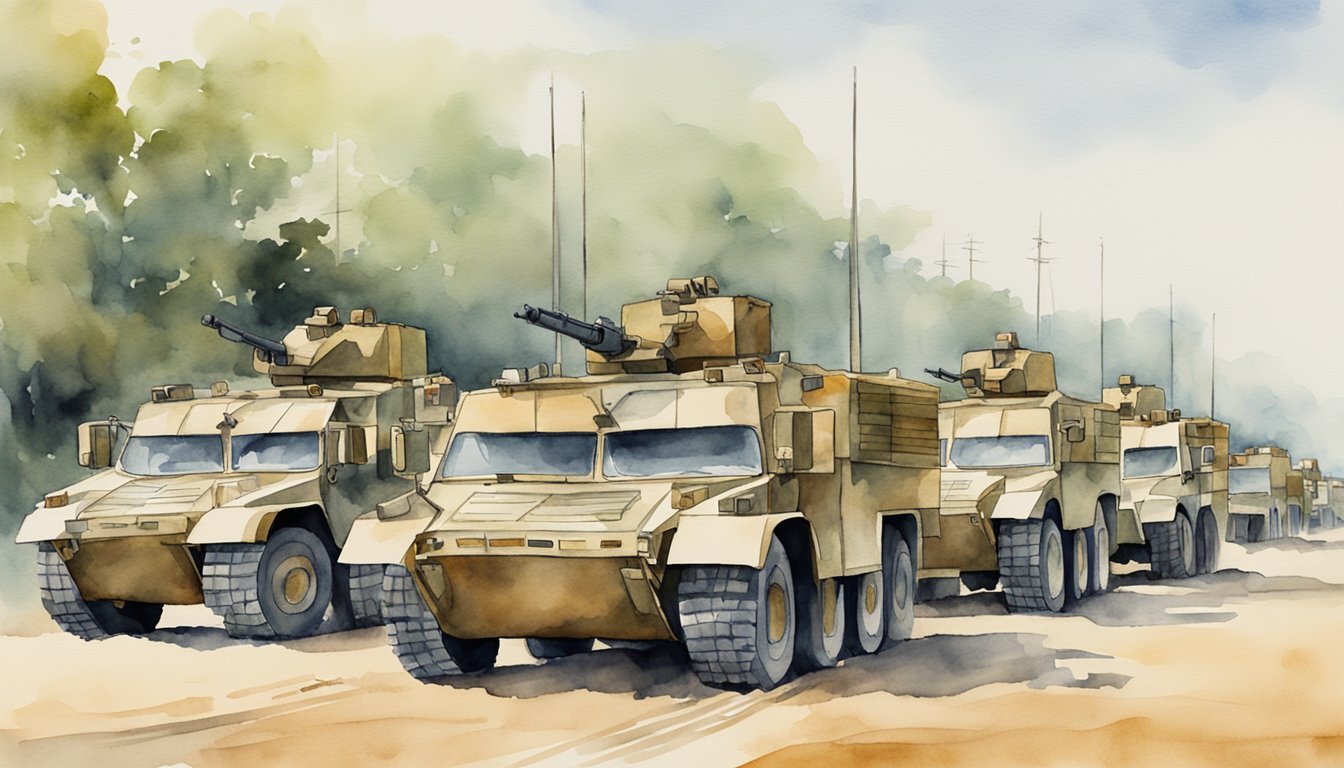
Bangladesh’s military has been working on strengthening its forces through significant modernizations and developments.
By focusing on updated technology and equipment, including exciting ventures such as Forces Goal 2030, the country aims to boost its defense capabilities.
Forces Goal 2030
Forces Goal 2030 is a key military modernization program for Bangladesh.
Launched in 2009 and revised in 2017, this program aims to reform military structures and expand the capabilities of the Army, Navy, and Air Force.
One of its main objectives includes buying advanced weaponry and upgrading existing systems.
The program emphasizes increasing the number of personnel and improving training regimes.
Significant investments have gone into modernizing artillery and incorporating advanced land warfare tactics.
Development also includes boosting naval power with submarines, thereby enhancing Bangladesh’s security.
Technology and Equipment Updates
Bangladesh’s military modernization drive also focuses on updating technology and equipment.
Recently, they upgraded their fleet with new helicopters and advanced jets.
Since the late 1990s, Bangladesh has acquired MiG-29 multirole fighters, which continue to be a significant part of their air capabilities.
The army has also modernized its artillery and land warfare equipment to strengthen its defensive power.
These updates involve adopting new communication systems and integrating advanced defense technology to improve troop efficiency and response times.
By balancing relations with countries like Russia, the UK, and India, Bangladesh ensures a diverse range of suppliers for its defense needs.
International Peacekeeping

Bangladesh plays a key role in international peacekeeping, particularly through its significant contributions to United Nations missions.
The military personnel have been recognized for their dedication and professionalism.
UN Missions
Bangladesh is one of the largest contributors to UN peacekeeping missions.
Since 1988, over 141,726 personnel from the Bangladesh Army have participated in more than 46 missions worldwide.
This includes roles in conflict zones where they help maintain peace and stability.
The country’s commitment to peacekeeping aligns with its foreign policy of non-alignment and promoting global peace.
You can find Bangladeshi forces actively involved in operations across Africa, Asia, and the Middle East.
Their responsibilities often include providing security, assisting with humanitarian efforts, and helping to rebuild war-torn communities.
This significant involvement underscores Bangladesh’s impact on maintaining international peace and security.
Military Operations
The military in Bangladesh plays a crucial role in maintaining national security, engaging in counter-terrorism efforts, and managing border patrols and conflicts.
These operations are vital to ensuring the nation’s safety and stability.
Counter-terrorism Efforts
Bangladesh has faced numerous threats from terrorist groups, and your military is active in preventing these threats.
The Rapid Action Battalion (RAB) plays a key part in counter-terrorism activities.
This elite force, established in 2004, frequently conducts raids to capture or neutralize militants.
The military also collaborates with international allies, sharing intelligence to combat terrorism.
They focus on disrupting networks and preventing attacks before they occur.
Many efforts involve rigorous training exercises, often performed in collaboration with countries like China during joint military drills.
By staying prepared and vigilant, your military works to keep the populace safe from terrorist activities.
Border Patrols and Conflicts
The military is also responsible for patrolling Bangladesh’s borders, particularly those shared with Myanmar and India.
You might see them working closely with the Border Security Force to manage and resolve conflicts.
This can involve preventing illegal crossings, smuggling, and human trafficking.
Patrolling the borders with Myanmar is especially challenging due to the ongoing Rohingya crisis.
Military forces are active in ensuring that refugees are safely managed and that border security remains intact.
Tensions can arise, requiring the military to employ diplomatic and tactical measures to maintain peace and order.
By conducting these operations, you help secure the country’s borders from various external threats and maintain good relations with neighboring countries.
Economic Aspects of Defense
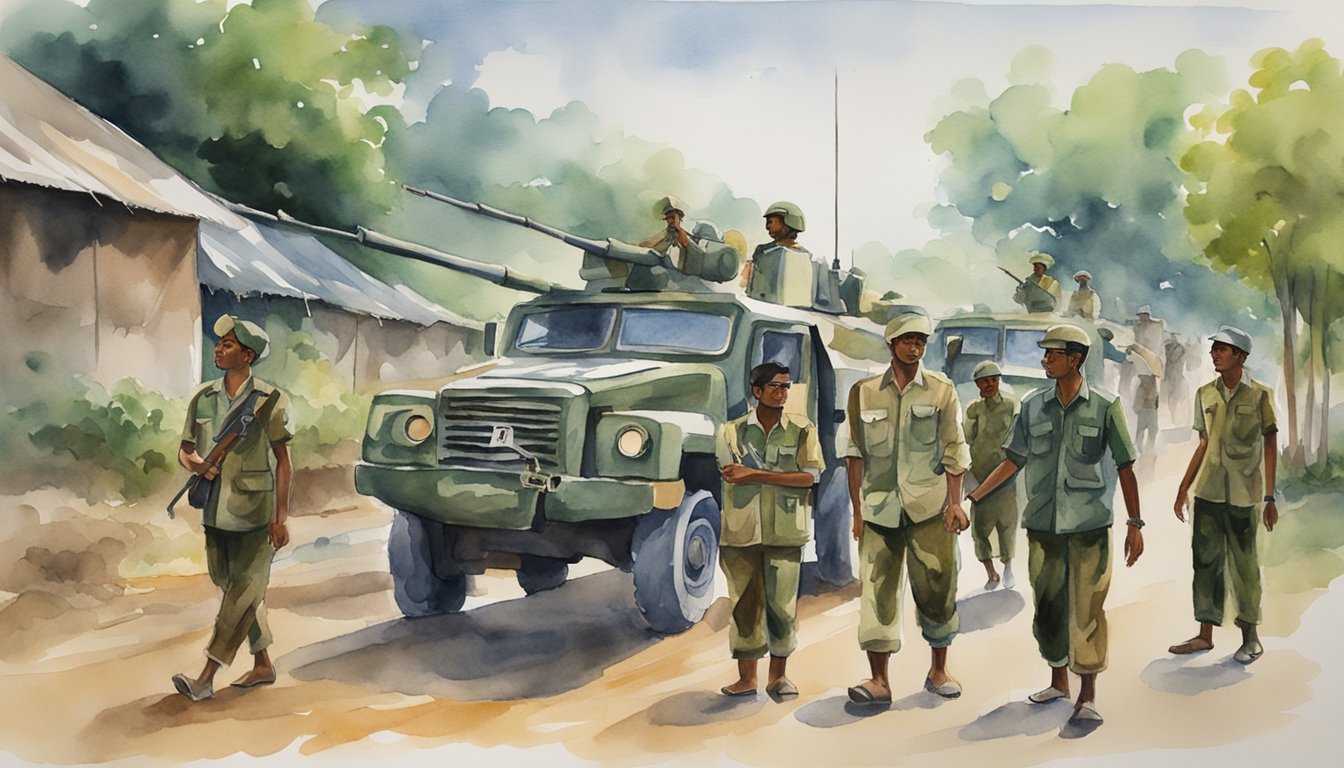
The economic aspects of defense in Bangladesh involve significant investment in budgets and various military projects.
The focus is on balancing costs with the need to modernize and secure the nation.
Defense Budget and Expenditure
Bangladesh’s defense budget has seen steady increases over the years.
In 2020, the defense spending reached $4.65 billion, marking a 6.96% rise from the previous year (source).
This consistent growth reflects the government’s commitment to strengthening the military.
Budget allocations cover various expenses, including personnel salaries, equipment purchases, and operational costs.
A significant portion is directed towards upgrading technology and infrastructure to ensure that the armed forces remain effective and capable.
Military Industrial Projects
The defense industry in Bangladesh is a key sector for economic activity.
It employs a large number of people and involves numerous projects aimed at enhancing military capabilities.
For instance, the Directorate General of Defense Procurement (DGDP) manages the acquisition of advanced weaponry and support systems (source).
One notable project includes the development of a submarine base to bolster maritime security.
This and other similar projects signify Bangladesh’s strategic moves towards self-reliance in defense manufacturing and infrastructure development.
Military Life and Culture
Military life in Bangladesh involves rigorous training, strong traditions, and significant ceremonies that highlight the discipline and valor of the armed forces.
Key aspects include how members are recruited and trained and the formal traditions they observe.
Recruitment and Training
Recruitment for the Bangladesh Army, Navy, and Air Force focuses on selecting individuals with physical fitness, mental strength, and a sense of duty.
You can expect to undergo a series of physical tests, written exams, and interviews.
Training is intense and comprehensive.
It includes physical conditioning, tactical drills, weapon handling, and survival skills.
Military academies like the Bangladesh Military Academy offer specialized training for officers.
The entire process aims to instill discipline, resilience, and teamwork.
Being part of the military means you’re continuously improving your skills through regular drills and exercises.
There’s also an emphasis on leadership and decision-making to prepare you for various scenarios.
Formal Traditions and Ceremonies
Traditions and ceremonies are a crucial part of military life in Bangladesh.
Armed Forces Day is a significant event where you can witness parades, military displays, and the commemoration of fallen soldiers.
This day fosters a sense of pride and unity within the ranks.
Ceremonial events like the Victory Day Parade involve precise drills and showcase military prowess.
Uniforms and insignia play an essential role, reflecting rank, achievements, and unit identity.
Formal gatherings, such as mess nights and official dinners, reinforce camaraderie and discipline.
These occasions often involve speeches, toasts, and the observance of military customs.
In short, military life in Bangladesh is a blend of rigorous training and deep-seated traditions, all aimed at building a strong, cohesive, and disciplined force.
Security Alliances and Diplomacy
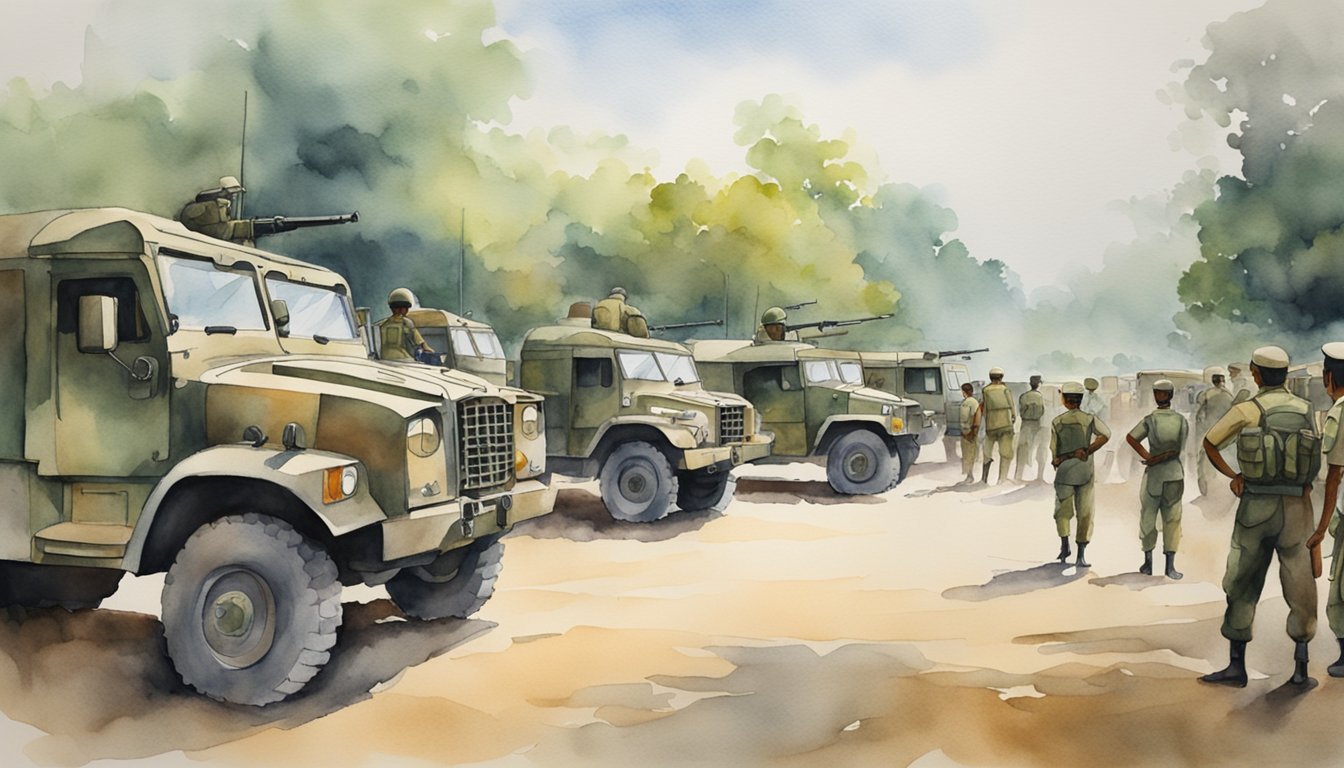
Security alliances and diplomacy play a crucial role in shaping the military dynamics of Bangladesh.
Key partnerships with neighboring countries and broader international engagements help bolster national defense and security efforts.
Regional Cooperation
In South Asia, Bangladesh collaborates closely with neighboring countries like India and China.
The two nations have conducted several military drills, enhancing their military coordination and readiness.
For instance, Bangladesh and India have held 11 military drills between 2009 and 2023.
This regional cooperation is vital for addressing common security threats.
Both countries focus on counterterrorism, border security, and maritime surveillance.
China also plays an important role.
The Sino-Bangladeshi military exercises underscore a growing partnership.
China has supplied Bangladesh with military hardware, including submarines, which are essential for Bangladesh’s maritime security strategy.
International Relations
Bangladesh maintains strong security ties beyond its regional neighbors.
The U.S.-Bangladesh Bilateral Security Dialogue is a testament to this, reflecting ongoing cooperation in counterterrorism, peacekeeping, and defense trade.
The U.S. and Bangladesh have enjoyed diplomatic relations for over 50 years, sharing interests in peacekeeping and maritime security.
These dialogues help strengthen Bangladesh’s defense institutions and ensure robust security cooperation between the two nations.
Bangladesh’s strategic engagement with other visiting countries also enhances its military capabilities.
These international relations provide access to advanced defense technologies and training, essential for modernizing Bangladesh’s military forces.
Strategic Analysis
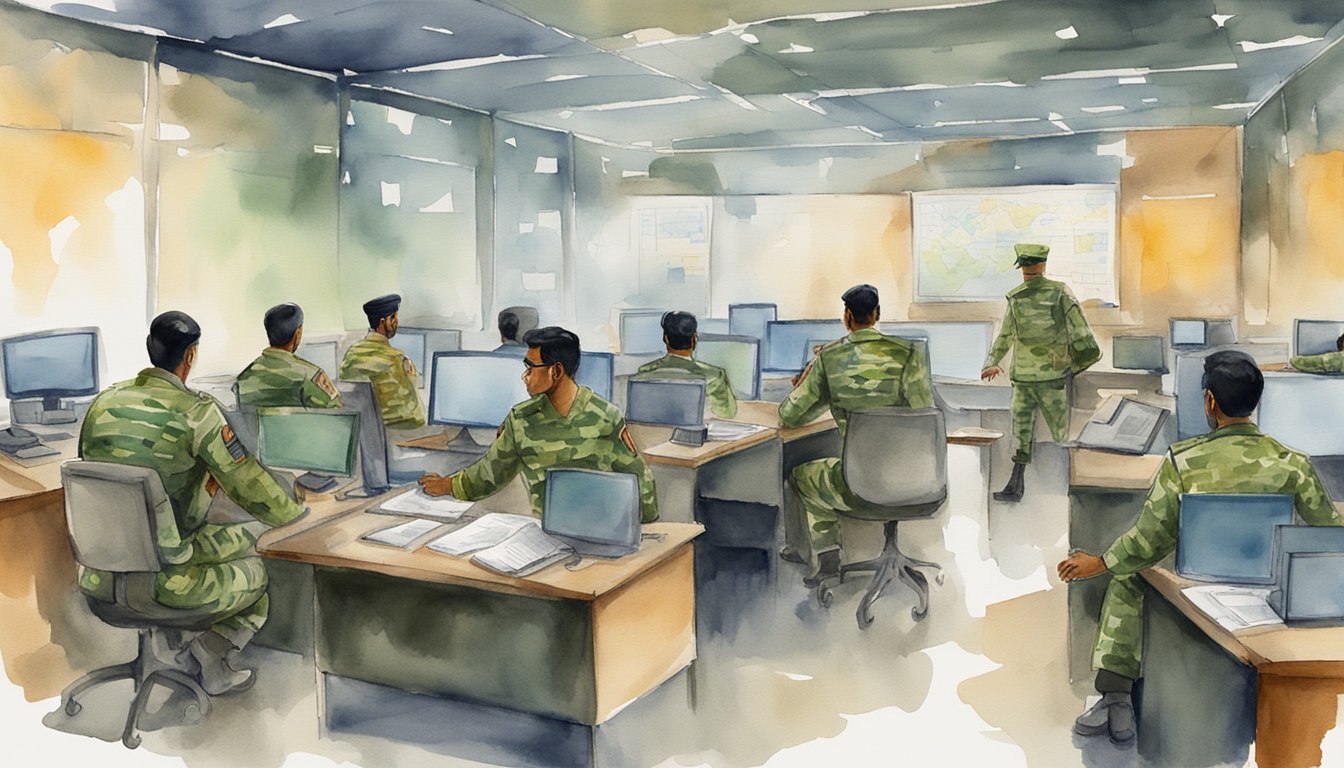
When looking at the military in Bangladesh, it’s important to consider both their strength and how they compare to others, as well as their geopolitical significance.
Military Strength and Comparison
Bangladesh has a sizable military force.
According to Globalfirepower.com, the country is ranked 46th in terms of military strength.
The Bangladesh Army boasts over 160,000 active personnel, supported by a significant number of reservists.
You might find it interesting that Bangladesh has been expanding its military capabilities.
They have increased their stock of tanks, artillery, and other heavy weapons.
Websites like Militaryfactory.com list their equipment as including more than 340 tanks, 600+ armored vehicles, and an array of missile systems.
In terms of air power, Wdmma.org reports that the Bangladesh Air Force operates over 170 aircraft, ranging from fighters to transport planes.
The navy, with frigates and submarines, adds another layer to their defense strategy.
Geopolitical Significance
Bangladesh sits in a unique spot.
Its location makes it a key player in South Asia.
Being surrounded by India on three sides and bordering Myanmar, Bangladesh’s military relationships are influenced by these neighbors.
The growing ties between Bangladesh and China have raised eyebrows.
According to a piece from The Diplomat, the two countries have started military exercises together.
This has significant implications for the region, potentially straining Bangladesh’s relationship with India.
The country is balancing relationships with major powers.
Ties with the U.S. are also crucial, especially with the focus on the Indo-Pacific strategy.
The diverse relationships underscore Bangladesh’s strategic importance in the broader geopolitical game.
Regulatory and Legal Framework
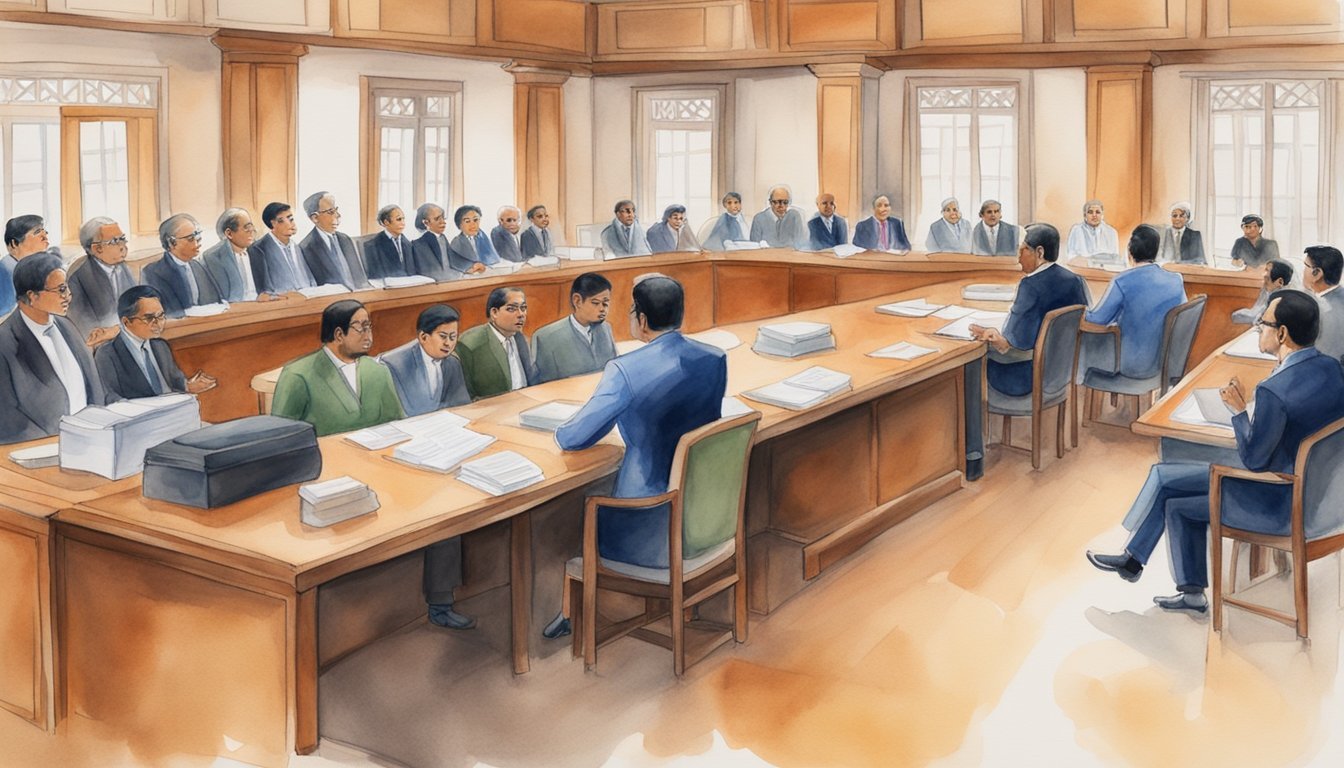
In Bangladesh, the military operates under a comprehensive set of laws and policies.
These regulations govern aspects from defense policies to intellectual property in the military sector.
Defense Policies
Defense policies in Bangladesh are designed to ensure national security and military readiness.
The National Security Intelligence (NSI) plays a vital role in maintaining intelligence and security for the military.
You can learn more about NSI from BIISS’s document.
The Ministry of Defense oversees these policies, which include guidelines for training, equipment procurement, and operational procedures.
This ensures that the military is prepared for various threats.
Regular updates to these policies help address evolving security challenges, making the defense sector more resilient.
Intellectual Property in Military Sector
Intellectual property laws are crucial in protecting military innovations and technologies.
These laws cover patents and trademarks related to military equipment and software.
For information on intellectual property laws for NGOs and governmental bodies in Bangladesh, refer to this document.
Protecting intellectual property ensures that critical military technologies are not misused or copied.
This helps maintain a technological edge over potential adversaries.
The enforcement of these laws is primarily managed by the Ministry of Justice in collaboration with the military.
This collaboration helps safeguard sensitive information and innovations within the military sector.
Frequently Asked Questions
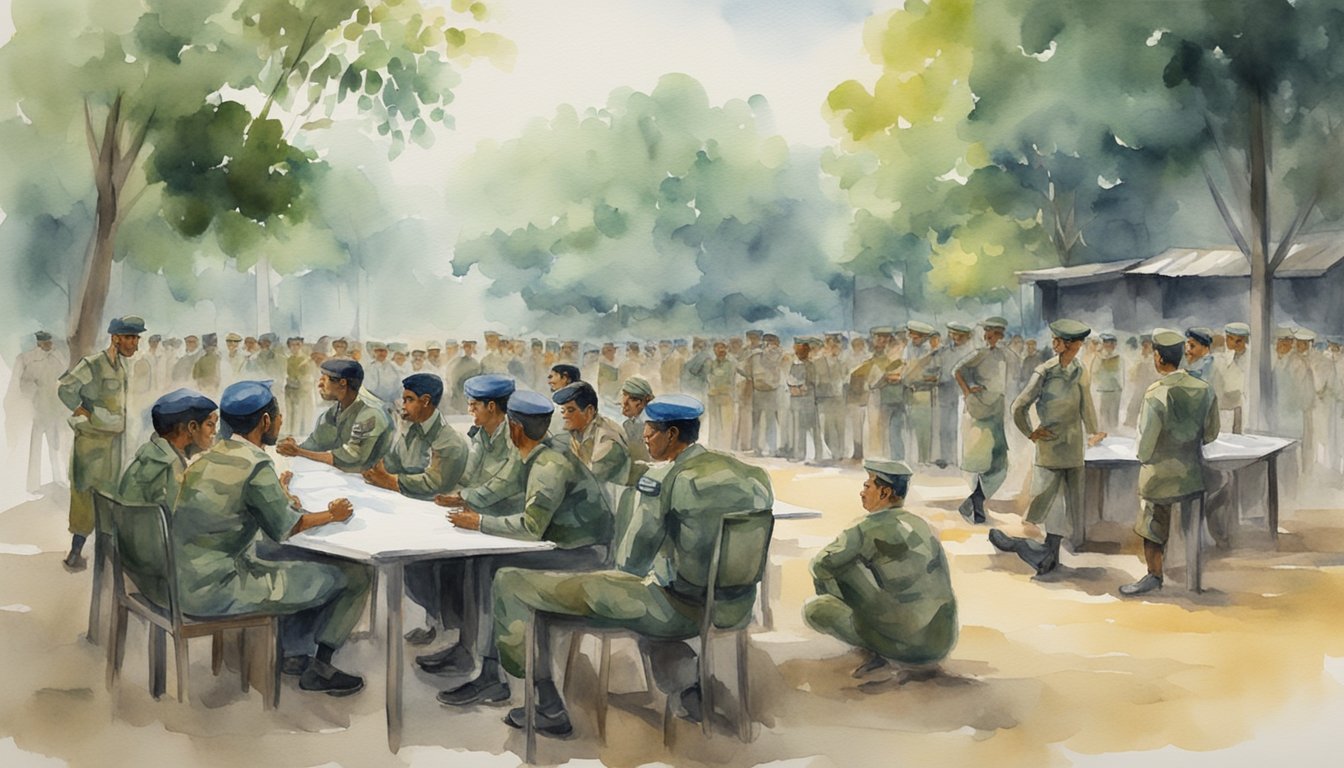
Learn about the ranks, leadership, special forces, equipment, power, and roles in the Bangladesh military.
Get insights into the structure and functions that shape the defense capabilities of the country.
What are the different ranks and salaries in the Bangladesh Army?
Ranks in the Bangladesh Army range from soldiers to generals.
Salaries vary based on these ranks, with higher ranks earning more.
Specific salaries are regularly updated to reflect economic changes.
Who currently holds the position of Bangladesh Army Chief?
The Bangladesh Army Chief is the head of the Bangladesh Army.
The position is filled by a four-star general.
As of now, this position is held by General S.M. Shafiuddin Ahmed.
Can you list the special forces units within the Bangladesh military?
Bangladesh has several special forces units.
Notable ones include the Para Commandos of the Army, SWADS of the Navy, and the Air Force Special Forces.
These units handle high-risk operations and play a key role in national security.
What kind of military equipment does Bangladesh have at its disposal?
The Bangladesh military is equipped with a variety of modern weapons and technology.
This includes tanks, aircraft, and naval vessels.
The military continuously updates its arsenal to maintain a strong defense posture.
Is the Bangladesh military considered powerful?
The Bangladesh military is respected for its capabilities in South Asia.
It maintains a balance of land, air, and naval forces.
Their strength lies in well-trained personnel and modern equipment, making them a key player in the region.
What’s the primary role of the military in Bangladesh’s defense strategy?
The primary role of the Bangladesh military is to safeguard the country’s sovereignty and territorial integrity.
This includes protecting national land, sea, and airspace from internal and external threats.
The defense strategy is coordinated through the Armed Forces Division.






